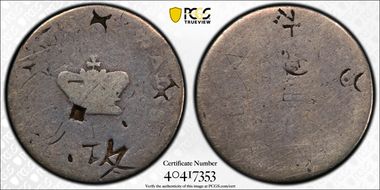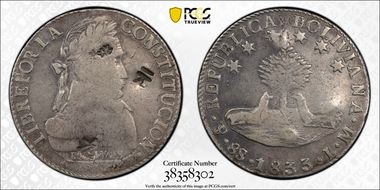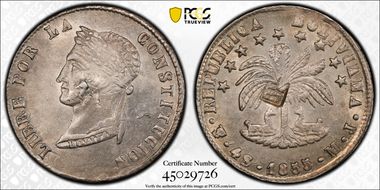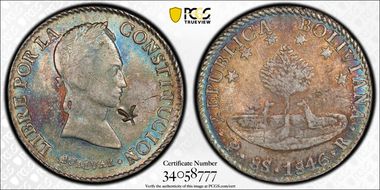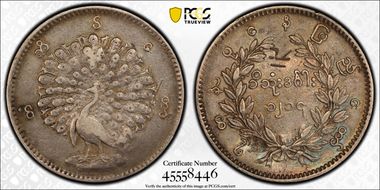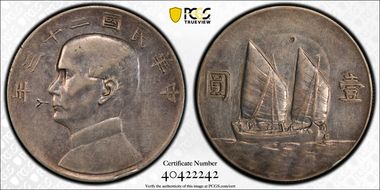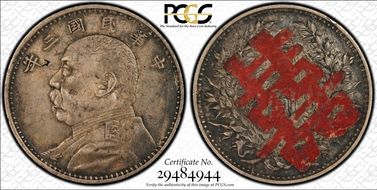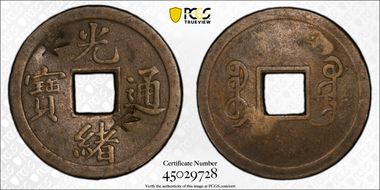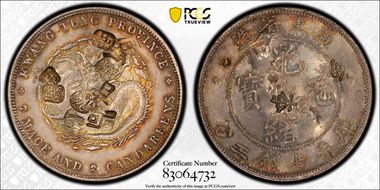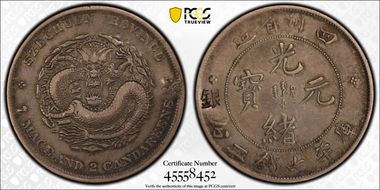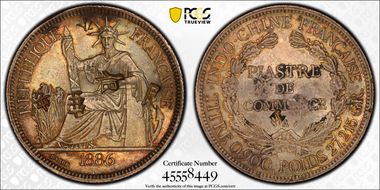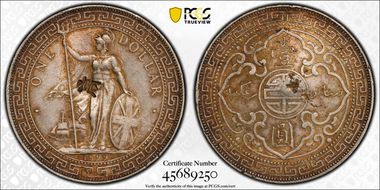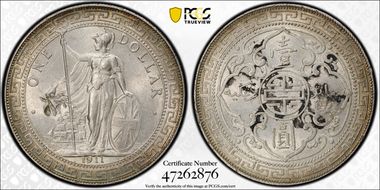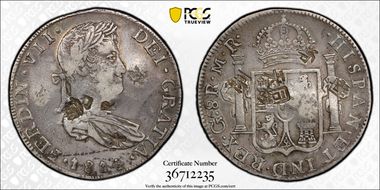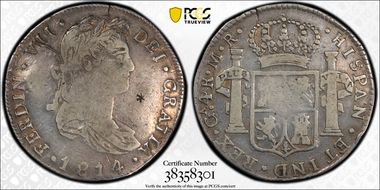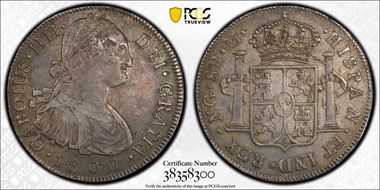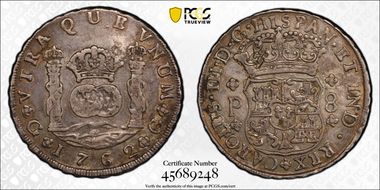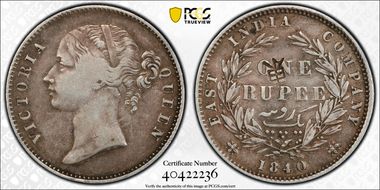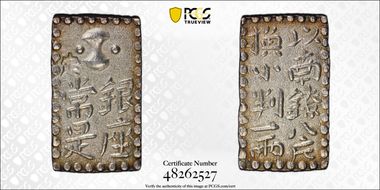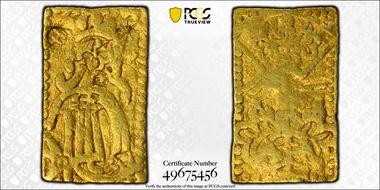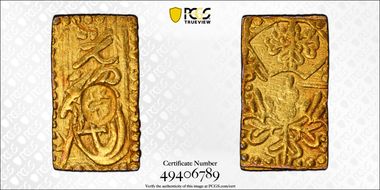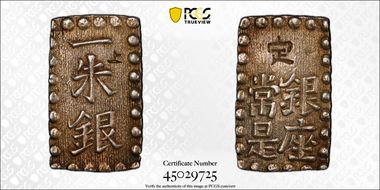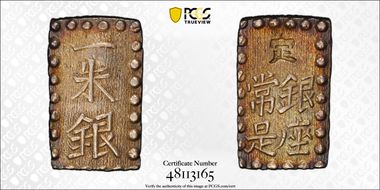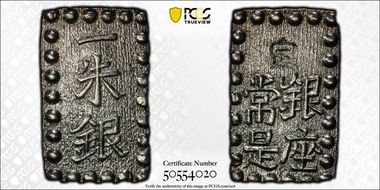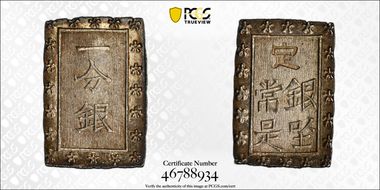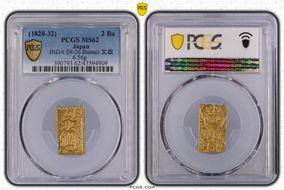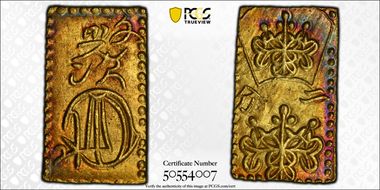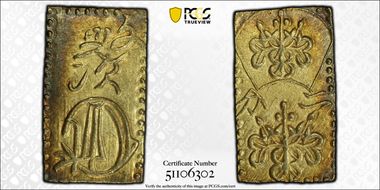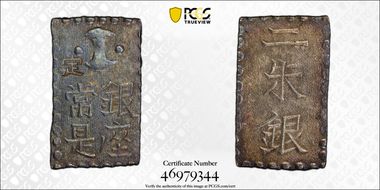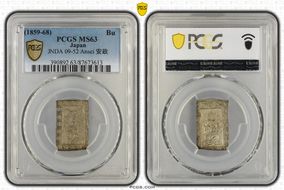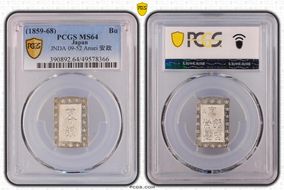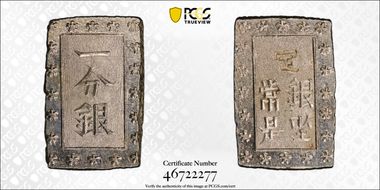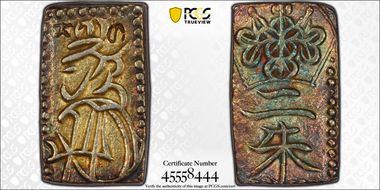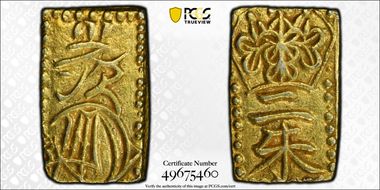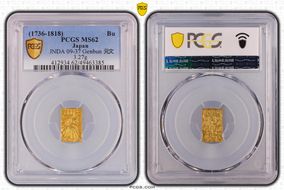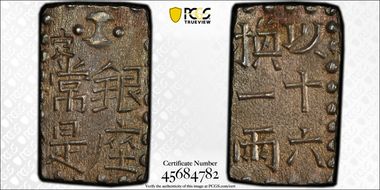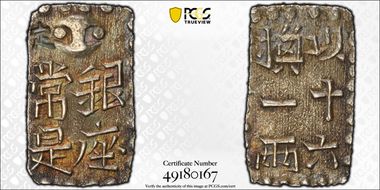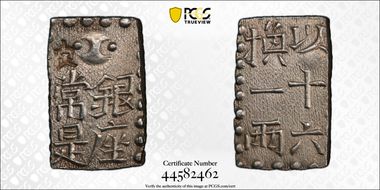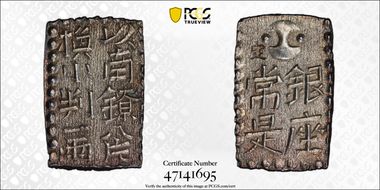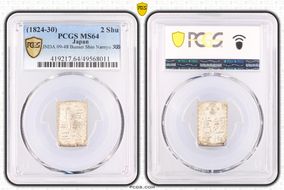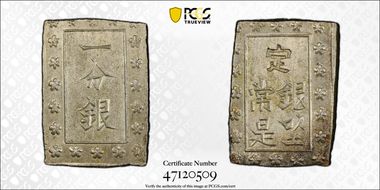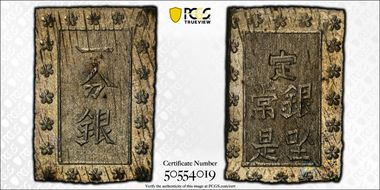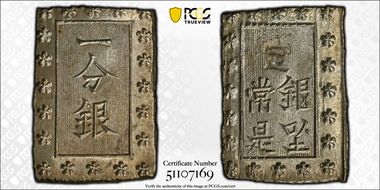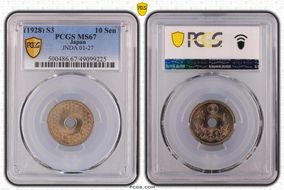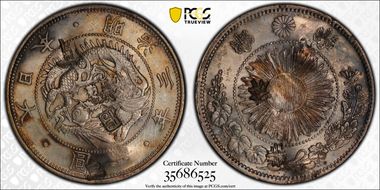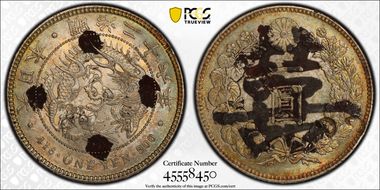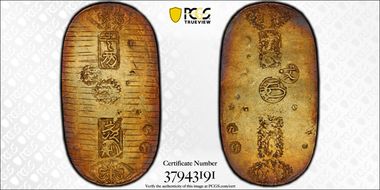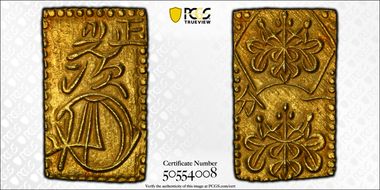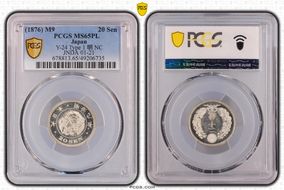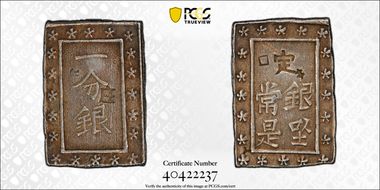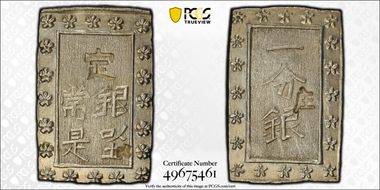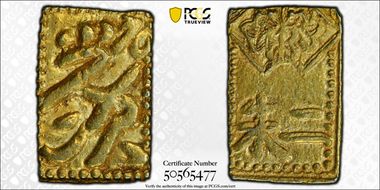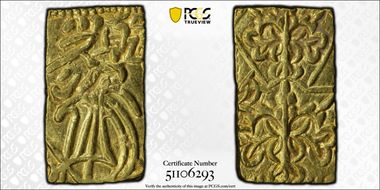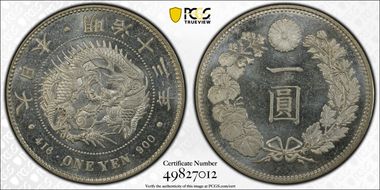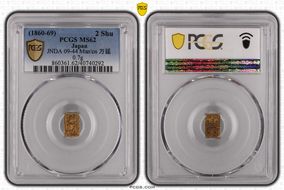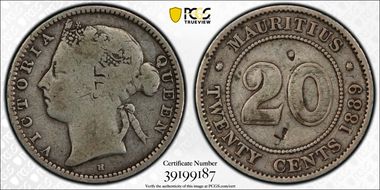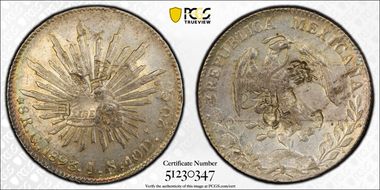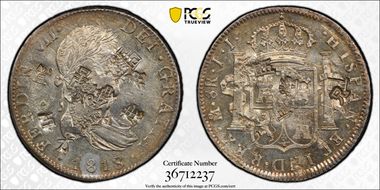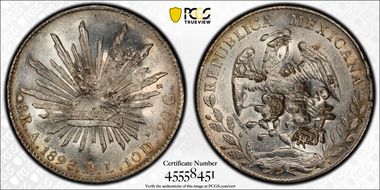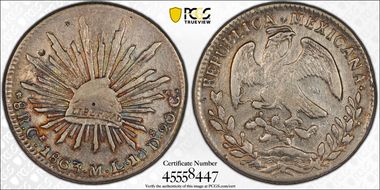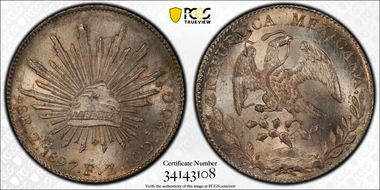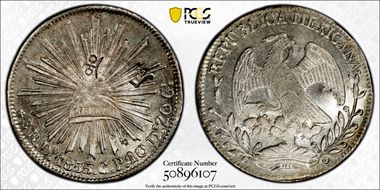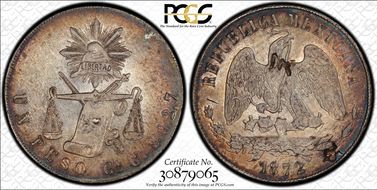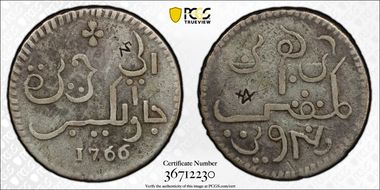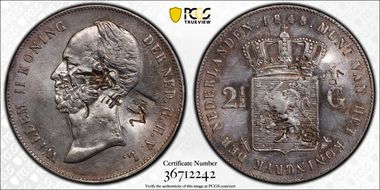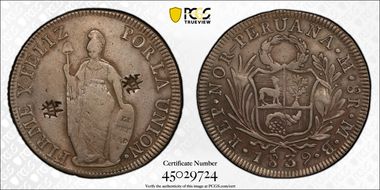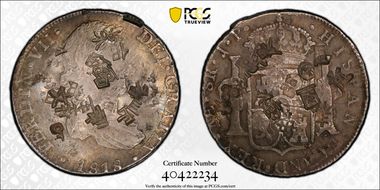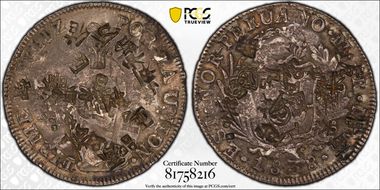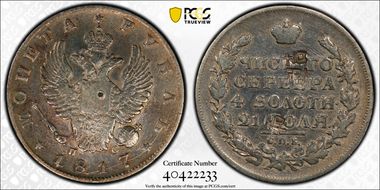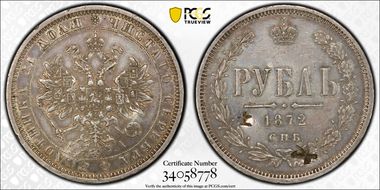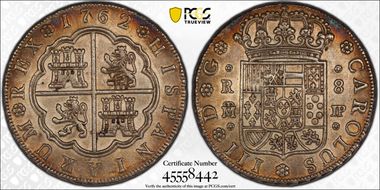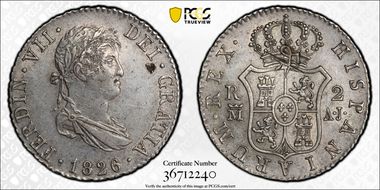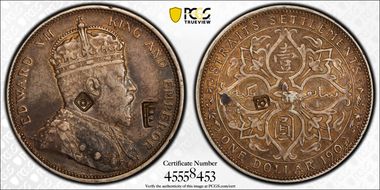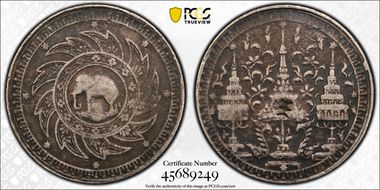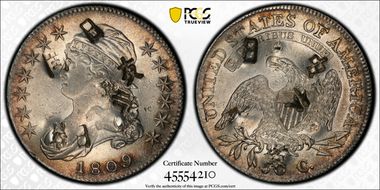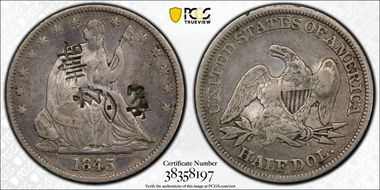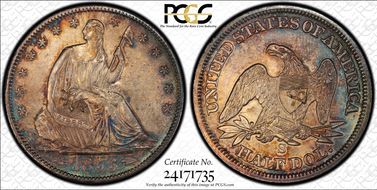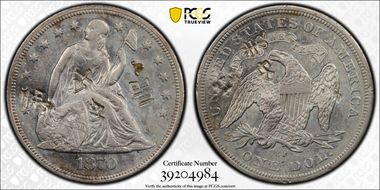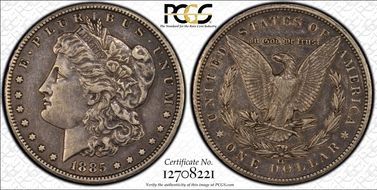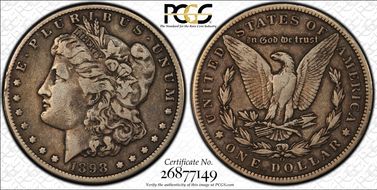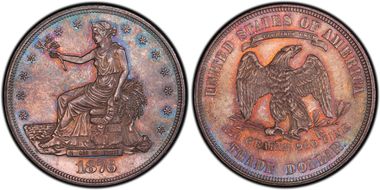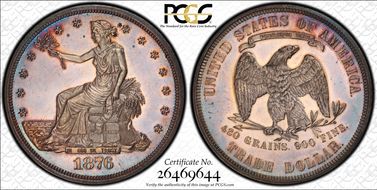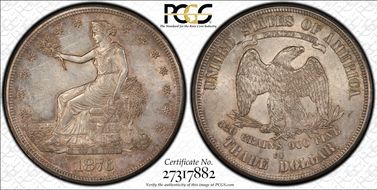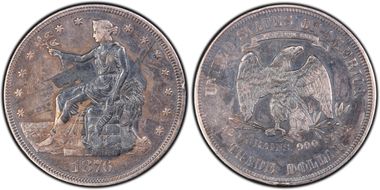Blackhawk 的钱币相册
Measured weight: 27.21 g, Recorded mintage: unknown but plentiful, Catalog reference: KM-10. The earliest chopmarked coin in my collection, this handsome Bolivian 8 reales will always stand out. Here we see an early style of chopmarks, in relief with circular or rounded rectangular outline, inconsistent in size. This style of chopmark is seen on coinage up through the mid 19th century. You'll also notice the deep test cuts, commonly seen on Spanish cob and early milled coinage. This coin was purchased in 2018 out of Barcelona, Spain. Chopmarks: 坏, 云, 天, 下, and 仁
Un Peso de Santiago, Chile. Single obverse chop. This issue ran from 1867-1891 and is really tough, but not impossible coin to find chopmarked
Pedigree: From the Henry P. Kendall Foundation Collection. Purchased from A.H Baldwin & Sons, October 28, 1965.
Spanish 8 Reales from Guatemala of Ferdinand VI type. Unlike the other colonial mints, Guatemala seems to have issued more four reales than any other denomination. Gilboy marks the Guatemalan half, one and two reales as "rare" and the eight reales as "scarce" to "normal." None are marked as common. Guatemalan issues are notably cruder than other mints, with this example showing some reverse strike weakness.
In terms of chopmarked examples, all denominations are rare. In his book "Chopmarked Coins - A History" Gullberg lists chopmarked 8 reales from Guatemala as "quite rare" with 11-25 known.
This coin is the epitome of what I strive for with this collection. High state of preservation, a few nice chops, with original and attractive surfaces. A one of a kind coin that I am proud to hold. Just two obverse and one reverse chops, all interesting and fairly well defined. One obverse drill mark helps connect this coin with it's intended purpose as trade bullion with authenticity constantly in question.
British Hong Kong Dollar from 1867, Queen Victoria obverse. These dollars were one of many attempts to unseat the dominant trade currency in China, the Mexican 8 Reales. Obviously unsuccessful, this design lasted only three years from 1866-1868 with a total of 2,109,000 produced for circulation. Their acceptance in circulation was hindered by a few factors. First off they were not consistent in weight, with coins varying by over half of a gram per coin. Another reason, Chinese merchants were accustomed to chopmarking silver coins as a form of authentication. Rumors spread that it would be considered offensive to deface the portrait of Queen Victoria, which resulted in a hesitance to use them for trade. These coins are overall somewhat scarce, but it is not uncommon to find chopmarked examples when they do surface. This example has overall nice original eye appeal with one interesting obverse chopmark (notably NOT on the portrait of Queen Victoria).
Spanish 8 Reales from Mexico City of Philip V type. One very unique obverse chopmark, one that appears to be marked with a tool that was crudely made, possibly by hand. Incuse, bearing a character meaning grace, kind act, favor, or simply "yes". It is unclear what the character means in this context. One of the most unique chopmarks I've seen. The Philip V series was issued from 1732-1747.
Pedigree: From the David Gray Collection.
Spanish 2 Reales from Mexico City of Charles III type. Nicely preserved with original toning and one obverse chopmark. From the Henry P. Kendall Foundation Collection. Purchased from G. Hearn, March 3, 1966. Includes original paper flip.
Un peso minted in Zacatecas, Republica Mexicana with assayer mark FZ. Two reverse marks appear to be chopmarks, although larger than normal chopmarks of this period. Unknown if these are actual chopmarks or some other kind of Chinese counter-mark. Beautifully toned and otherwise mint state. Update 7/2015: The June 2015 issue of Chopmark News (volume 19) shows a coin on page 13 from the Juan Pablo Mejia collection which provides decent confirmation that these marks are indeed valid Chinese chopmarks. The newsletter coin is a 1901-MO AM Peso, showing two of this same large mark on the obverse of the coin, along with multiple valid Chinese chopmarks on the reverse.
Spanish 4 Reales cob from Mexico City of Carlos II type. Shield obverse, Jerusalem cross quartering Arms of Castile and Leon reverse. 13.9g weight. The date is just clear enough to identify, and the piece as a whole is nicely preserved and attractive given the life it has lived. Mexican 4R are generally available as cobs, although more challenging than 8R to find with clear dates due to smaller size.
The Carlos II series was issued from 1665-1700.
Pedigree: Stack's Bowers November 2015 Baltimore Lot 39336.
Ex. David O'Harrow Collection Ex. Ponterio & Associates Sale #58 October 17, 1992, Lot #6.
Spanish 8 Reales from Mexico City of Ferdinand VI type. Two nice relief chops, one obverse, one reverse. Featured in the March 2014 issue of Chopmark News. The obverse symbol is ? meaning Sheng or Cheng, presumably a family name. The Ferdinand VI series was issued from 1747-1760.
Spanish 4 Reales from Mexico City of Philip V type. A neat overdate with nice toning. A handful of incuse chopmarks are seen on the obverse, with one large chopmark and two test drill marks on the reverse.
Minor denominations from Mexico with chopmarks are considered scarce in general, I consider chopped pillar 4 Reales to be rare. This is the only example I've seen of this particular (over)date with chopmarks.
Pedigree: From the David Gray Collection. Ex: Richard Long Sale #92 Lot #439 May 29, 2003
Balance Scale Peso sourced from the Guadalajara mint in Mexico. The Mexico Balance Scale Peso series was issued from just 1869-1873. Original mintage of 485,000, this issue is scarce to rare, chop marks or not. Known as "Balanzas" in the orient, the Balance Scale Peso is similar to the US Trade Dollar in that it was not a success in the export market in China, the destination for most of Mexico's silver. The type was discontinued in 1873 and the Cap and Rays 8 Reales design was once again adopted. This example is brilliant with sharp AU details and pretty toning and two interesting reverse chop marks. In his book focused on Chopmarks, Gullberg states it is fairly easy to find Balance Scale pesos with chopmarks. This has not been my experience, especially for one with the eye appeal of this example.
Spanish 8 Reales cob from Mexico City of Philip IV type. Shield obverse, Jerusalem cross quartering Arms of Castile and Leon reverse. 27.6g weight. The date and assayer are clear enough, despite crude manufacture and wear from circulation. Multiple small chopmarks and a couple test cuts adorn the reverse.
The Ferdinand IV series was issued from 1621-1665.
Pedigree: Stack's Bowers November 2015 Baltimore Lot 42506.
Spanish 4 Reales from Lima, Peru of Ferdinand VII type. Nicely preserved with original toning and one reverse chopmark. From the Henry P. Kendall Foundation Collection. Purchased from G. Hearn, March 3, 1966. Includes original paper flip.
US Liberty Seated half dollar, with Arrows from the mint in San Francisco California. The US Liberty Seated half dollar series was issued from 1839-1891. The centerpiece of my chopmark collection. This coin stands on its own, at the same time it epitomizes what I set out to find for this collection - attractive and well-preserved pieces with chopmarks to signify their usage in commerce.
This example is a key date within the seated half series, with only 4 known true uncirculated examples. This example shows convincing uncirculated details and luster, with only the chopmarks keeping it from joining the elite group of 4 uncirculated examples known.
One obverse chopmark is weakly impressed with one reverse chopmark, both centered. My first thought was to confirm the chopmarks are legitimate and I am convinced they are. The first and possibly most convincing factor is that adding chops to this coin greatly diminishes the value. Second, the single, centered chopmarks are consistent with many other chopmarked examples of seated halves from this period. Something that initially concerned me about the coin is an apparent lack of reciprocal damage from the chopmarks. However, after viewing the coin in hand I can see the damage is present, although faint.
The obverse chop symbol is ? meaning "glory". The reverse chop symbol is ? meaning "central" or "middle".
A very attractive, neat coin that I am honored to hold in this collection.
Type 1.5/2 circulation strike example, struck from proof dies. The obverse shows characteristics of both the Type 1 obverse with the tails of Liberty scroll pointing downwards, but also characteristics of the Type 2 obverse with Liberty's outstretched hand showing a thumb and 4 fingers. This is one of my favorite varieties.
Type 1.5/2 circulation strike example, struck from proof dies. The obverse shows characteristics of both the Type 1 obverse with the tails of Liberty scroll pointing downwards, but also characteristics of the Type 2 obverse with Liberty's outstretched hand showing a thumb and 4 fingers. This is one of my favorite varieties.
Very hard to find in any circulated grade, PCGS has graded less than 50 in circulated condition. What makes this even more cool is that this is a VAM-2A, apparently an R6 and hardly ever seen. I wonder how many other circulated examples of this VAM exist.
Very hard to find in any circulated grade, PCGS has graded less than 50 in circulated condition. What makes this even more cool is that this is a VAM-2A, apparently an R6 and hardly ever seen. I wonder how many other circulated examples of this VAM exist.
A well worn $20 gold piece that more recently traveled as a pocket piece for an older gentleman in my home town. It's neat to be able to find a piece like this for just a little over melt value. Unsurprisingly this is the lowest graded 1878-CC double eagle at PCGS
A neatly toned Type I/II centennial year issue preserved in mint state. Of note, this coin shares the same reverse die as the 1876 4F Type I/II proof and 1876 Type II/II proof and business strike issues. A good example of a die that was used to strike both circulation and proof issue coins. This one has prooflike surfaces with die cracks. Higher grade than I normally target but it was attractive and with the shared reverse die I liked it for study. I have only seen 2 or 3 business strikes of this die pair, I don't think many were made. The picture looks cartoonish but the surfaces and tone are really nice. That's what you get from proof dies.
A neatly toned Type I/II centennial year issue preserved in mint state. Of note, this coin shares the same reverse die as the 1876 4F Type I/II proof and 1876 Type II/II proof and business strike issues. A good example of a die that was used to strike both circulation and proof issue coins. This one has prooflike surfaces with die cracks. Higher grade than I normally target but it was attractive and with the shared reverse die I liked it for study. I have only seen 2 or 3 business strikes of this die pair, I don't think many were made. The picture looks cartoonish but the surfaces and tone are really nice. That's what you get from proof dies.
US Trade Dollar from the main US mint in Philadelphia. With manufacture happening further from Asia and travel arrangements much tougher in the late 1800's, chop-marked Philly trade dollars are scarce and usually command a premium. To say it a different way, this one had to travel just a bit further than a San Francisco or Carson City issue. A perfect mildly circulated example of the US centennial year. Of note, this coin shares the same reverse die as the scarce 76P Type II/II trade dollar variety.
Type I/II 4 Finger. A pretty example of this "transitional" proof with nice mirrored surfaces. Note the obverse shows the liberty scroll tips pointing down and to the left, as normally seen on a Type I obverse. However, Liberty's outstretched hand shows 4 fingers, as normally seen on a Type II obverse. It is unknown how or why this die came to be, whether it was an experimental die, an accidental mistake, or something else. I estimate that about 10% of all 1876 proofs are of this Type I/II 4 Finger variety. CAC Approved.
Type I/II 4 Finger. A pretty example of this "transitional" proof with nice mirrored surfaces. Note the obverse shows the liberty scroll tips pointing down and to the left, as normally seen on a Type I obverse. However, Liberty's outstretched hand shows 4 fingers, as normally seen on a Type II obverse. It is unknown how or why this die came to be, whether it was an experimental die, an accidental mistake, or something else. I estimate that about 10% of all 1876 proofs are of this Type I/II 4 Finger variety. CAC Approved.
Type I/II 4 Finger. A pretty example of this "transitional" proof with nice mirrored surfaces. Note the obverse shows the liberty scroll tips pointing down and to the left, as normally seen on a Type I obverse. However, Liberty's outstretched hand shows 4 fingers, as normally seen on a Type II obverse. It is unknown how or why this die came to be, whether it was an experimental die, an accidental mistake, or something else. I estimate that about 10% of all 1876 proofs are of this Type I/II 4 Finger variety. CAC Approved.
Great lustrous and original example of this rare DDR. A high end 58 and CAC Approved. Neat late obverse die state.
The 1876 Type II/Type II is very rare, this one popped up raw on a eBay in early 2012. The coin looks to have been through a few wars, with some dark staining on the obverse. PCGS deemed that it has"environmental damage" probably based on what looks like an ink stain on the obverse. I have studied this coin for hours and I'm still not 100% convinced that it is either a business strike or an impaired proof. In the right light, the flash of proof-like fields can be observed. Along with the lack of die cracks, this coin possibly was struck as a proof. On the other hand, the obverse head and reverse eagle's talon are not well struck, as one might expect of a proof issue. Based on appearance alone, my gut says this is a worn, spent proof issue coin however there appear to be 2 planchet flaws in the right obverse field around stars 11 and 12. Maybe this was a proof, rejected for quality issues? Either way, a tough coin to find with the Type II/Type II obverse/reverse combination. I'll go with PCGS on this one and refrain from offering a grade. It has it's problems but I'd rather have this look than a scrubbed white coin. I'm waiting patiently for a nice properly graded example to come along. Some day.
The 1876 Type II/Type II is very rare, this one popped up raw on a eBay in early 2012. The coin looks to have been through a few wars, with some dark staining on the obverse. PCGS deemed that it has"environmental damage" probably based on what looks like an ink stain on the obverse. I have studied this coin for hours and I'm still not 100% convinced that it is either a business strike or an impaired proof. In the right light, the flash of proof-like fields can be observed. Along with the lack of die cracks, this coin possibly was struck as a proof. On the other hand, the obverse head and reverse eagle's talon are not well struck, as one might expect of a proof issue. Based on appearance alone, my gut says this is a worn, spent proof issue coin however there appear to be 2 planchet flaws in the right obverse field around stars 11 and 12. Maybe this was a proof, rejected for quality issues? Either way, a tough coin to find with the Type II/Type II obverse/reverse combination. I'll go with PCGS on this one and refrain from offering a grade. It has it's problems but I'd rather have this look than a scrubbed white coin. I'm waiting patiently for a nice properly graded example to come along. Some day.





















